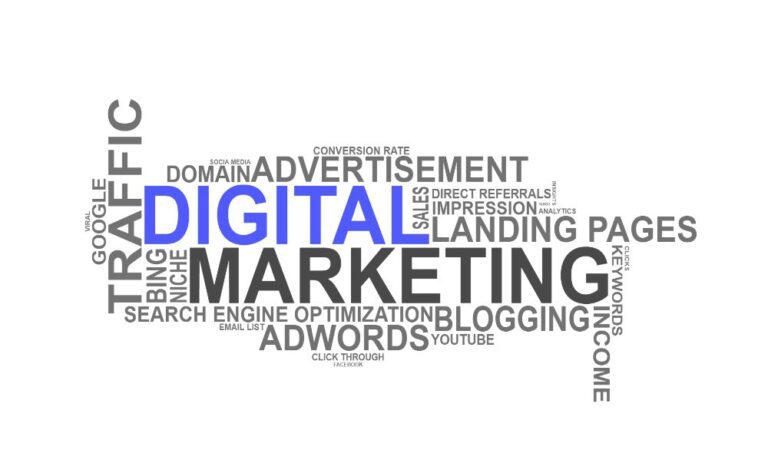How to Create Your First Digital Marketing Campaign
Research, strategy, time, and patience are all necessary components of a great marketing campaign. To guarantee that your message is received by the appropriate individuals at the appropriate moment, you will need to compete with a lot of noise, therefore it is important to make sure that you take the time to organize each step.
If you have never managed a marketing campaign before, it can be challenging to comprehend how all of its components operate together. There are also a lot more channels to think about, and if you want your marketing campaign to be successful, you’ll need to mix the strength of conventional media with the power of digital media through an integrated marketing plan.
This article will walk you through the many steps and components that are necessary to develop and launch your very first marketing campaign. Let’s get started!
Describe the individual and company marketing objectives you have.
Before you can plan any kind of campaign, you need to have a firm grasp on your overall marketing objectives and document them. For the greatest possible outcomes, set goals that are SMART, which stands for specific, measurable, attainable, realistic, and timely.
Your objective could be to acquire ten new customers every month, to sell twenty things every week, or to boost either your income or sales by thirty percent. Your goals may be oriented around sales, the satisfaction of your customers, or profits; however, the most important thing is to identify them from the very beginning so that you can track and measure the performance of your campaign.
Determine Your Budget
You will need to decide how much money you are willing to spend before you begin your study. Why? Because conducting persona research typically requires financial investment, and you will want to factor these expenditures into the overall budget for your campaign, Early on in the process of designing your campaign, you should decide how much money you have available to spend. This will help you determine your goals, approach, and even how much content you can develop.
Carry out Investigation Into the Market
Conducting market research is vital to getting to know your target demographic. It’s possible that you’ll discover, after conducting research, that the audience to which you should direct your marketing efforts and engage is really a different cohort than the one you first envisioned. Because of this, developing buyer personas is essential, and market research plays a role in the process of developing them.
So where do you even begin? Explain in detail not only what your product or service is and what it can do for customers, but also how it differentiates from similar offerings from other companies. The next step is to concentrate on the most important aspects of your product or service, such as the pricing, service, distribution, and positioning. At this point, you should compile, arrange, and write down this information. The following are some areas that should be considered:
• The behavior of the market and its trends, such as seasonality
• Product: what are the options that are now available? What kind of products does your rival sell?
• Standards for the industry
• Possible suppliers and business associates on whom you would have to rely During this stage of the process, you will also need to consider your competitors and formulate your distinctive selling proposition (USP). What sets you apart from the other companies in your industry? Please elucidate the following in a few sentences:
• Who your primary customers are
• What you provide or provide
• Your unique selling proposition
You will learn how to effectively sell your product or service once you have determined your target market with the help of these activities. All of this study will be incorporated into the persona marketing research that is the following step.
Determine Your Target Personas
Even though identifying your target personas is frequently included in the process of conducting market research, the task is significant enough to warrant its own step.
You need to ask questions of yourself in order to connect with and engage the audience you are trying to reach. What are the reasons behind your consumers’ purchases? What kind of communication style do they prefer to use? Where is their preferred place to look for information? Which distribution methods do they utilize for their products? What do they seek for and what do they talk about on social media, if they utilize it? If you know the answers to these questions, you will be more equipped to build a marketing strategy that will be effective.
What are the Steps in Creating Marketing Personas?
1. To begin, characterize your ideal consumer by providing details such as their age, gender, family make-up, wages, likes and dislikes, lifestyle, shopping patterns, buying objections, hobbies, and so on.
You can simply download this buyer persona template if you require assistance in getting started.
2. Test your target customer assumptions. It’s possible that you won’t always sell to the people you believe you will, or that you won’t make your maximum potential with this group. This can be accomplished through the use of audience listening tools, sponsored external surveys, in-person or online focus groups (provided you have the financial means to do so), customer surveys, a quiz aimed at your followers on social media, or any combination of these methods. Whoever responds to your product or service with the most enthusiasm is likely to be your true target market, so pay attention to this group.
You can simply download this buyer persona template if you require assistance in getting started.
The following is a list of the information you need to learn about your personas:
• Name of the persona, such as “stay at home mom” or “career climber”;
• Job title;
• Company size and industry;
• Title/details of role;
• Gender; Salary; Education; Location; Age; Education;
• Pain points; these are specific problems that your current or prospective customers face; for example, they want to save money or time and are looking for a product or service that can help them do that.
• Pain points; these are specific problems that your current or prospective customers
• A customer’s goals
• The types of material and promotion that they enjoy or do not enjoy
• Their fears and motives
• The most common objections raised during the sales process
Create an Outline of Your Campaign Objectives
After you have figured out how to sell your product and who your target audience is, you can begin to describe your specific campaign goals and connect them to a strategic strategy for digital marketing after you have reached that point. You will now define “The Big Idea” for your campaign using this section. The way in which you interact with and persuade your audience will be determined by this idea.
You will also need to select whether you want to concentrate on building customer loyalty, expanding your client base, or increasing your customer base. Once more, you should design goals that are SMARTER. On the basis of these objectives, you should decide which Key Performance Indicators (KPIs) to track and monitor.
Because you have a budget in mind for your campaign already, you will be able to assign a monetary value to a good number of your objectives. You may, for instance, have a goal of spending $1,500 on Facebook advertisements in order to obtain X number of views and X number of new clients. When you get to the analytics part of your campaign (more on this later), you will easily be able to determine the return on investment (ROI) of your marketing efforts and assess whether or not your objectives have been met.
During this stage of the process, you will finally make the decision on the types of content that will be used in your campaign. You might decide to use one or more of the strategies outlined below to accomplish your objectives, but whatever you do, don’t forget to take into account the preferences of your personas. Do they take pleasure in reading? Watch movies or videos? Are you receptive to advertising? Develop material that can be utilized in a variety of formats to achieve the greatest possible results (a blog that can be broken into an infographic or images converted into memes).
The following components might be included in a marketing campaign that is successful:
• The effectiveness of email marketing
• The potential of social media
• Pay-per-click advertising
• Automation
• Demand creation
• Landing pages, websites, and online storefronts that are highly convertible
• Content marketing (created, curated, etc.)
• Customer Relationship Management (CRM) platforms like HubSpot
• Coupons
• Demos/evaluations/trials
• Events
• Press Releases / Public Relations
• Analytics
• “Direct” Marketing (Traditional Media) — magazines, print advertisements, leaflets, etc.
Many different types of material formats are typically included in campaigns that are successful. Following the selection of the content kinds to be utilized, you will be able to select the success metrics to employ. For instance, merely stating that your goal is to “grow sales” is not sufficient. Do you wish for more customers to purchase clothes from the online store that you run? Examine the following six e-commerce tactics to prepare your company for the years to come.
Create a marketing campaign brief in order to plan out each component of your campaign before moving on to the next step. This should be done before moving on to the next step.
Production of Content
You’ve done your homework, and now you’re prepared to start producing content for your website. However, it is not necessary for you to do everything. In order to devote more of their resources and time to strategy, many businesses choose to outsource the creation of their content (blogs, ebooks, videos, infographics, etc.) to independent authors or to agencies. You have the option of creating all of the material yourself, some of it, or none of it at all, and outsourcing the design and video elements.
No matter what you choose to do, make it a point to maintain your personas at the forefront of your mind throughout the entire process of production.
Promotion and Administration of Marketing Campaigns
It is time to begin promotion and execution once you have completed and finalized your material and received approval from all relevant parties.
You can utilize many different strategies for inbound marketing, including some of the ones that were just described, such as social media, email, pay-per-click advertisements, public relations, telemarketing, and many more. Even customers who don’t make an immediate purchase but still enter your sales funnel through one of its many entry points (an event, telemarketing calls, a landing page, etc.) may prove to be lucrative in the long run.
However, your company may not benefit from utilizing all available channels. Ask yourself what the advantages and disadvantages are of using each channel. Do they put on a performance, and if not, what are the reasons? In what ways may they assist you in achieving your business and revenue goals? ‘
Conduct an evaluation of your marketing campaign.
Analyses based on targeted indicators need to be included directly into marketing strategies. This manner, you can ensure that your budget is going toward the appropriate strategies and channels, making use of the content and messaging that is most effective.
The following are some useful methods for measuring and analyzing the performance of campaigns:
• The amount of time users spend on each page (measured with Google Analytics)
• The number of organic website visitors to your content (use Google Analytics)
• The percentage of recipients who open and click on emails (marketing automation software, such as Marketo)
• Referrals and clicks that come from paid advertisements (Google Analytics)
• The total number of potential customers acquired at an event (various ways)
• Activity (likes and shares) on several social media platforms (paid social analytics tools such as Simply Measured, or free analytics from the social networks themselves.)
Utilize a Google Analytics goals guide to learn how to successfully measure key performance indicators (KPIs) and track campaigns.
No matter which method you choose to use to track your campaign, you need to ensure that you have sufficient data to convince either your team, your supervisor, or even yourself that you should keep spending in marketing.
Make an investment in your knowledge of marketing.
Investing in your own marketing abilities is, without a doubt, the smartest thing you can do before beginning your first campaign of any kind. You will understand the fundamentals of digital marketing after completing DMI’s Professional Diploma in Digital Marketing, and you will also learn how to use the channels that are available to optimize your marketing activity. These channels include social media, paid search, SEO, email, analytics, and many more.







